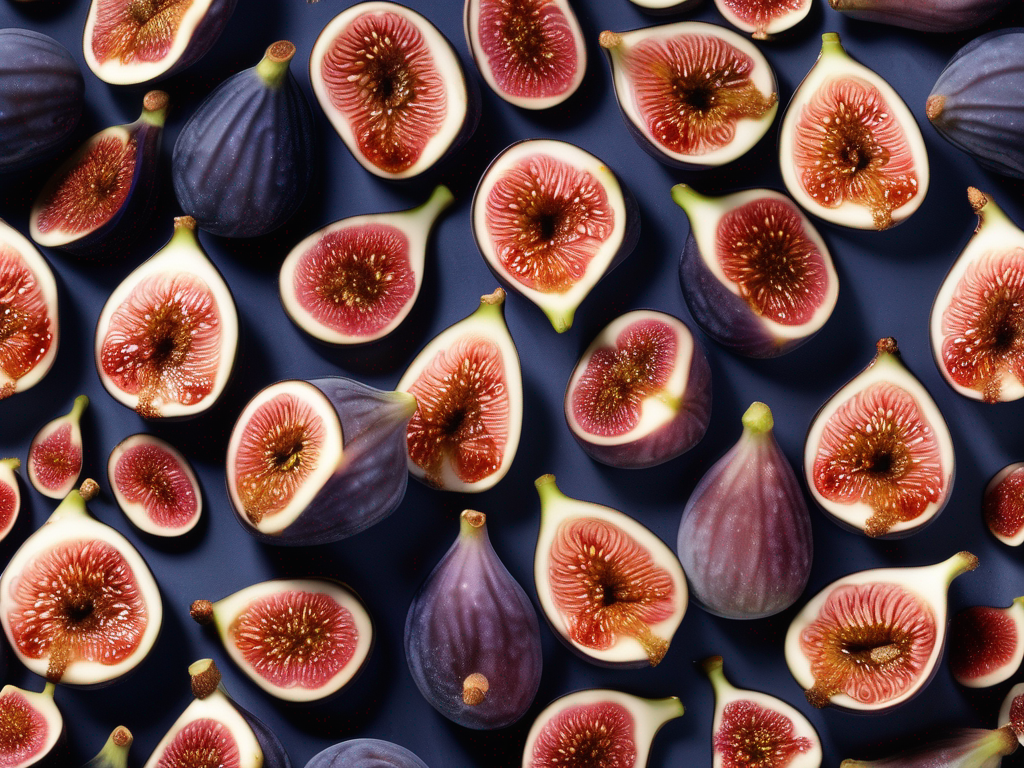
How to Store Figs to Keep Them Fresh Longer
Get Your Free Food Safety Cheat Sheet
30 most common foods with instant answers. Print it and stick it on your fridge—completely free!
How to Store Figs to Keep Them Fresh Longer
Figs are delicious and nutritious fruits that are enjoyed fresh or dried. They are packed with fiber, vitamins, and minerals, making them a popular choice for snacking, baking, and cooking. To fully enjoy the sweet and delicate flavor of figs, it's important to store them properly to ensure they stay fresh for as long as possible. In this blog post, we will discuss the best practices for storing figs to maintain their freshness and quality. (Fig)
Understanding Figs
Before diving into the storage tips, let's briefly understand what figs are and why they are a fantastic addition to your diet. Figs are a unique fruit that belongs to the mulberry family. They come in various colors, including green, purple, and black, with a sweet and honey-like taste. Figs are rich in fiber, antioxidants, and essential nutrients such as potassium, magnesium, and vitamin K. They offer numerous health benefits, including improved digestion, heart health, and immune function.
Types of Figs
There are several varieties of figs available, with some of the most common types being:
- Black Mission figs
- Brown Turkey figs
- Calimyrna figs
- Kadota figs
Each type of fig has its own distinct flavor profile and uses in cooking. Regardless of the variety you choose, proper storage is essential to maintain their freshness and flavor.
Tips for Storing Figs
Here are some practical tips to help you store figs properly and extend their shelf life:
1. Selecting Fresh Figs
- Choose figs that are ripe but still firm to the touch. Avoid figs that are mushy or have bruises.
- Look for figs with a rich color and a slight plumpness, indicating they are fresh and flavorful.
2. Refrigerating Figs
- Place fresh figs in a single layer on a paper towel-lined plate or shallow container to prevent them from getting squashed.
- Cover the figs loosely with plastic wrap or a breathable storage bag to protect them from moisture and odors.
- Store the figs in the refrigerator's crisper drawer, where the temperature is slightly cooler and more consistent.
3. Freezing Figs
- If you have an abundance of figs or want to extend their shelf life, consider freezing them.
- Wash and dry the figs thoroughly before freezing to remove any dirt or residue.
- Place whole figs or sliced figs in airtight containers or freezer bags, removing excess air to prevent freezer burn.
- Label the containers with the date before placing them in the freezer for up to 6-8 months.
4. Drying Figs
- Dried figs are a popular snack and ingredient in baking and cooking.
- To dry figs at home, wash and slice the figs, then place them on a baking sheet lined with parchment paper.
- Dry the figs in the oven at a low temperature (around 140°F) for several hours until they are leathery and slightly sticky.
- Store dried figs in airtight containers at room temperature for up to 6 months.
5. Using Preservatives
- If you prefer to use preservatives to extend the shelf life of figs, consider options such as sugar syrup, honey, or vinegar.
- Create a simple syrup by dissolving sugar in water and submerging the figs in the solution before storing them in the refrigerator.
- Honey and vinegar can also be used to preserve figs and enhance their flavor.
Conclusion
By following these storage tips, you can enjoy fresh figs for longer periods and incorporate them into a variety of dishes. Whether you prefer eating figs fresh, dried, or preserved, proper storage is key to maintaining their quality and flavor. Experiment with different storage methods to find what works best for your preferences and lifestyle. Incorporate figs into your diet for a delicious and nutritious addition to your meals. Check out our main fig page for more information and recipes featuring this versatile fruit. (Fig)
Related Posts
Here are some other articles you might find helpful:
Authoritative Food Safety References
These agencies and university labs inform every tip and health precaution we publish.
USDA FoodKeeper – Cold Storage Guidelines
Official refrigerator, freezer, and pantry timelines maintained by the U.S. Department of Agriculture.
Visit USDA FoodKeeperFDA Produce Safety Rule & Grower Guidance
Field-to-fridge handling practices that prevent contamination of fruits, vegetables, and leafy greens.
Visit FDA Produce SafetyCDC Foodborne Illness Prevention Hub
Surveillance-backed guidance on pathogens, symptoms, and steps to reduce foodborne illness risk.
Visit CDC Food SafetyUC Davis Postharvest Technology Center
University research detailing optimal storage atmospheres for produce after harvest.
Visit UC Davis PostharvestPenn State Extension – Home Food Preservation & Safety
Peer-reviewed extension bulletins on safe canning, chilling, and reheating practices.
Visit Penn State ExtensionGet Your Free Food Safety Cheat Sheet
30 most common foods with instant answers. Print it and stick it on your fridge—completely free! Want more? Upgrade to the complete guide with 70+ foods.
Scan your food directly and get instant safety info using our AI-powered camera feature.